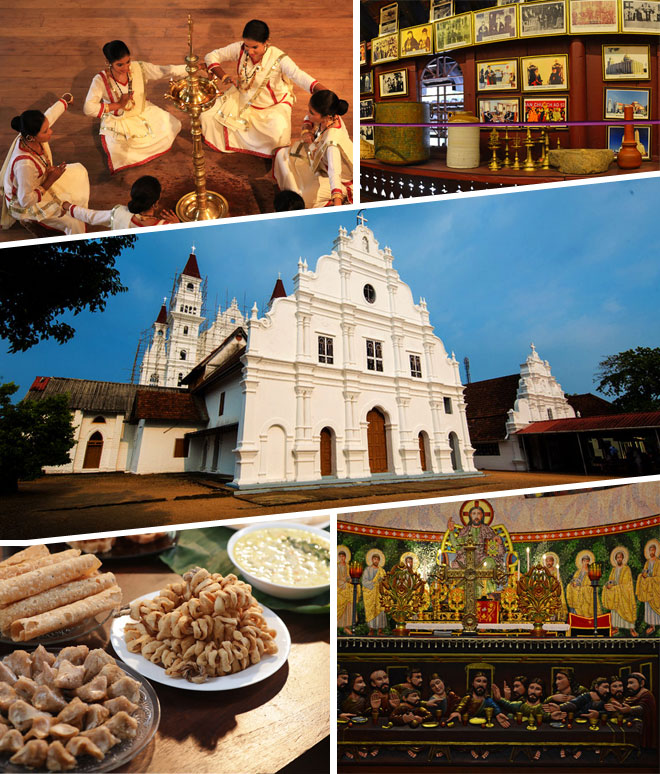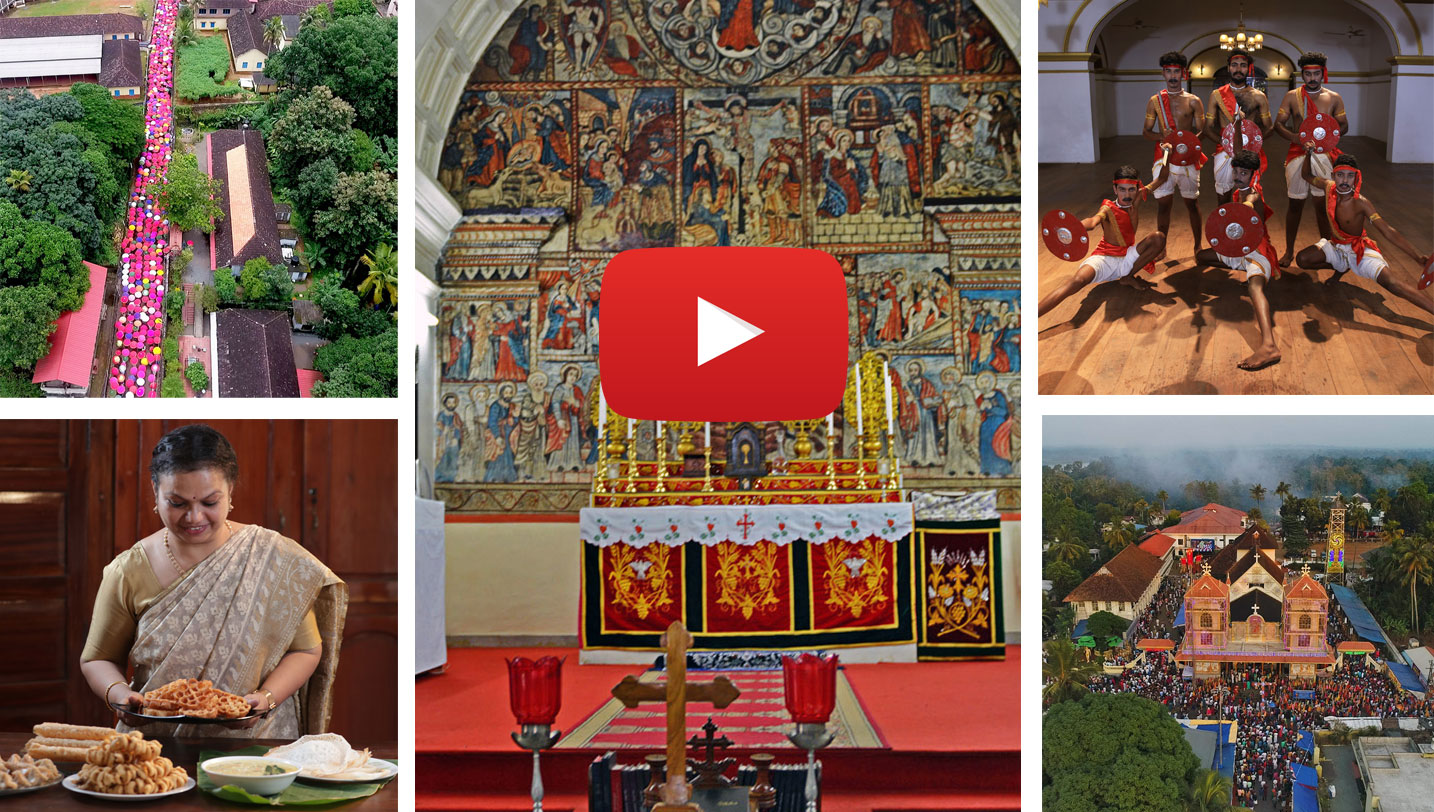Descriptions of St. Thomas Christians
The first traveller to report the presence of St. Thomas Christians in Kerala, was Cosmas Indicoplenstes who visited India in CE 522. He wrote: “In Taprobans Island there is a church, priests and members of the Christian community. The same is the case of Male where pepper grows in plenty. A Bishop ordained in Persia is there in a city named Kalliana.”
In the early records, the western coast is described as Malabar. Historians admit that Taprobans Island is Sri Lanka and Kalliana is Kollam. Male was a centre of pepper trade. Cardinal Tisserant, in his book on the traditional Christians of India, says that Male was not a port, but an inland town and identifies it as Angamaly.
Trade groups:
The control of trade and commerce in Kerala vested with trading groups such as Anchuvannam and Manigramam. They had the monopoly over foreign trade too. Jews and Christians were the heads of these groups. Since Christians and Jews selected trade as their vocation, it is believed that there was no Vyshya sect in the Hindu community of Kerala. In Christian centers, markets and trade centers were set up in the precincts of churches. Many weekly and evening markets too were set up near churches. St. Thomas Christians were the intermediaries of foreign traders. They were given the respect commanded by the Vyshyas in the North, beyond the Vindhya Mountains. During the arrival of the Portuguese, trade in the coasts of Coramandel, Kochi, Kozhikode and Kannur were controlled by a community called Marakkan. Ludovico di Varthema has written about Mamale Marakkar, the richest trader in Malabar.
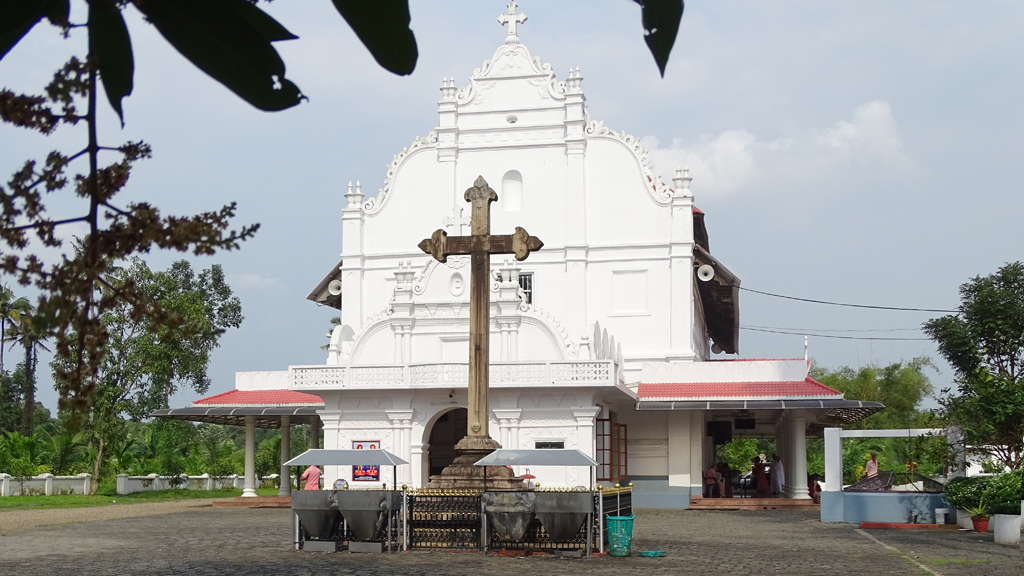
Syrian Bishops:
During the initial stages of Christianity itself, Bishops appointed by the Patriarchs of Armenia and Babylonia came to stay here. David, a Bishop from Basra, was the first to reach India in CE 295. The place he selected as headquarters in Malabar is still not clear. Bishop Mar John was the second to arrive in CE 325. In the Synod of Nicaea, Mar John signed the documents as the Bishop of India and Persia. His headquarters must have been located on the India-Persia border. Joseph of Edessa was the third Bishop to reach India in CE 345. He was sent as the Catholicos of the East.
According to certain documents, Mar Thoma who arrived after the departure of Mar Sabor and Mar Proth, was in Kerala till CE 1056 and another Bishop, Mar Yohannan was here from CE 1122 to CE 1129. In CE 1302, Pope John XXII sent Bishop Jordanus to Kerala and he lived in Kollam.
According to 14th Century documents, the Bishop of India has the 14th position in the Nestorian Church’s list. It also says that the Christian community had a prominent presence in Kerala in the 14th century and Angamaly and Kodungalloor were seats of the Bishops sent by the Patriarch.
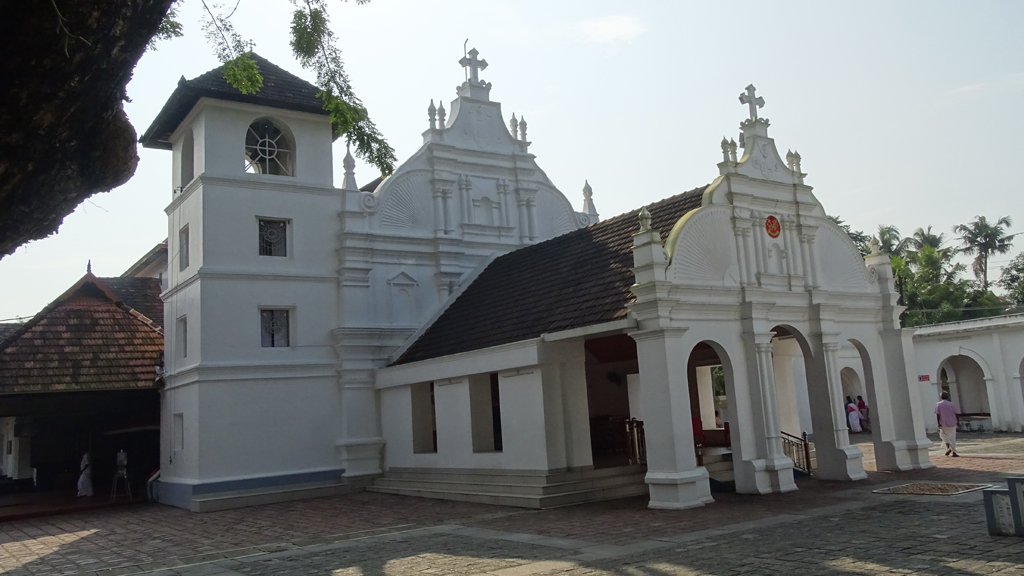
When the Portuguese reached Kochi in CE 1500, Angamaly was the seat of the Archdeacon, and Bishop Mar Joseph lived there. The Bishop enjoyed the protection of the Christian soldiers and the Archdeacon. Gouvea, who reports the Synod of Diamper at Udyamperoor, says that the Nasrani Christians had 83 churches and the community comprised traders and feudal lords who had the wherewithal to construct churches in different regions. There were four churches in Angamaly during the early days itself. One of them was the seat of the Bishop and another, the residence of the Archdeacon and the camp of the Christian soldiers. The Jacobite church in the name of Virgin Mary was constructed by Archdeacon Gheevarghese in CE 1564. The Akaprambu church in Angamaly, that Gouvea says stands in a dense forest, is believed to have been founded in CE 825.
There are historical documents to prove that Angamaly was the seat of Bishop Mar Joseph. According to a book authored by Fr. Bernard Thoma, a copy of the Old Testament written by Mar Joseph at Angamaly has been preserved at the Vatican library. The book also says that before the arrival of Mar Abraham, Mar Joseph had stayed in Angamaly. Records of Carneiro say that there was only one church in Angamaly at that time. The Bishop stayed in St. George Church, which was also known as Valiya Pally. The seat of Joseph Metropolitan was initially in Kodungalloor. Mar Joseph might have selected Angamaly as a safer place for the seat of the Arch Deacon in the 16th Century. The Babal Patriarch might have fixed up Angamaly Diocese for Mar Abraham as part of a succession plan.
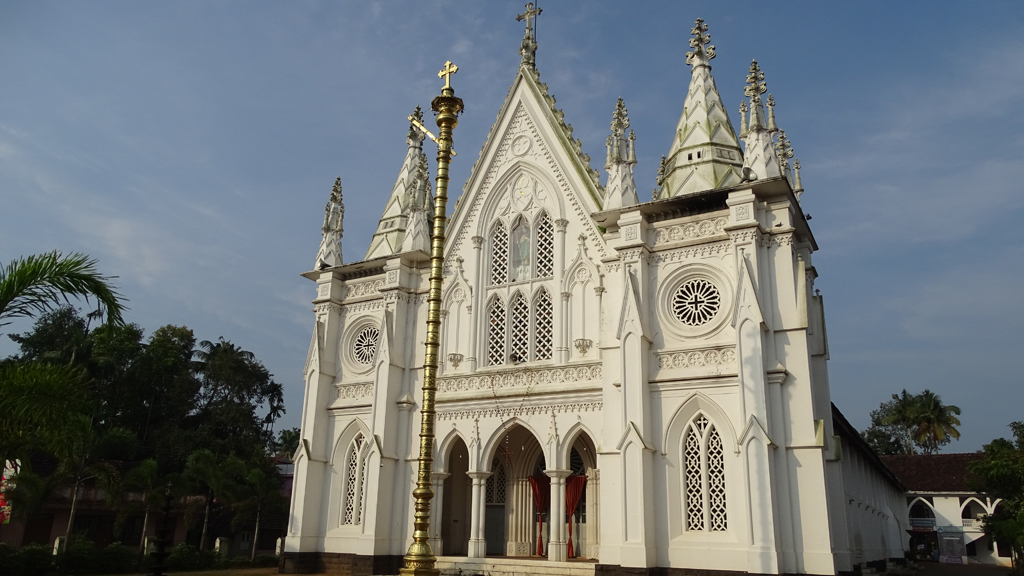
Tenure of the Swaroopams:
There were many local Christian rulers and feudal lords in Kerala during the time of the Portuguese, especially in Angamaly. A prominent Minister of the Poonjar Kings was a Christian. These rulers, who had control over the high ranges, reached spices, sandalwood, ginger, pepper, and wood to the Portuguese. The Christian feudal nobles helped the king to secure arms from the Europeans.
The shift of Nediyiruppu Swaroopam from Eranad to Kozhikode was what attracted the traders to Kozhikode. Ibn Batuta who visited Kozhikode in CE 1343 describes it as the biggest port in Kerala. When the Mongolians attacked Baghdad in CE 1260, the Mamaluks of Egypt defeated the Mongols in Ain Julat and Cairo became the hub of international trade. The Muslims from Kozhikode shipped merchandise through the Red Sea to Cairo. The Egyptians made Kozhikode one of the prominent ports in the Indian Ocean. The Zamorin emerged as the most powerful ruler in Malabar with their help. The Zamorin conquered the vassals of Nilambur, Manjeri and Kottakkal and tried to attack Kochi many times. But for the resistance by the Portuguese, Kochi would have vanished from the map in the 16th century itself. Kodungalloor port was destroyed in the floods in River Periyar in CE 1341 and Kochi port developed as a result. The Perumpadappu Swaroopam, fearing the Zamorin, migrated first to Mahodayapuram and then to Kochi. During the same period, Arab countries and China started trading in Kochi. The exports by Christians from Kollam suffered a setback following the Muslim domination in Kozhikode and Kannur. The Nediyiruppu and Perumpadappu Swaroopams were constantly fighting against each other. This helped the Portuguese to establish their sway in Kerala. The Portuguese supplied men, guns and ammunition for such fights. They provided tanks and ammunition for Thekkumkoor rulers also. A German soldier, Marcos Roize Dalemanha was the private secretary to the ruler of Kochi in 1548. The local rulers appointed foreigners for training their soldiers in the European way and securing arms too.
Attempts to bring the St. Thomas Christians under Rome:
Following the founding of the Goa diocese in CE 1534, the Bishops from Portugal began to concentrate there. The Portuguese asserted that they had the right to nominate all the Bishops in India. Hence they decided that the Bishop of St. Thomas Christians should also be under the Goa Bishop. They used many strategies to establish their supremacy over the Indian Church on the excuse that it was under the Padruodo. After the death of Mar Abraham, the Angamaly Archdiocese was brought under the Bishop of Goa, on the pretext that there was no immediate successor. This was a move to take over the monopoly of trade also.
- The Tradition of St. Thomas
- The arrival of St. Thomas
- Seven and half Churches
- Post St. Thomas arrivals
- The scenario before the arrival of Gama
- Missionary Activities
- Descriptions of St. Thomas Christians
- The Padruodo
- Portuguese Forts
- Synod of Diamper
- Latinization of Churches
- Coonan Cross Oath
- Post Koonan Kurissu
- Establishment of churches
- Starting of Seminaries
- Anglo Indians
- Migrations to Malabar
